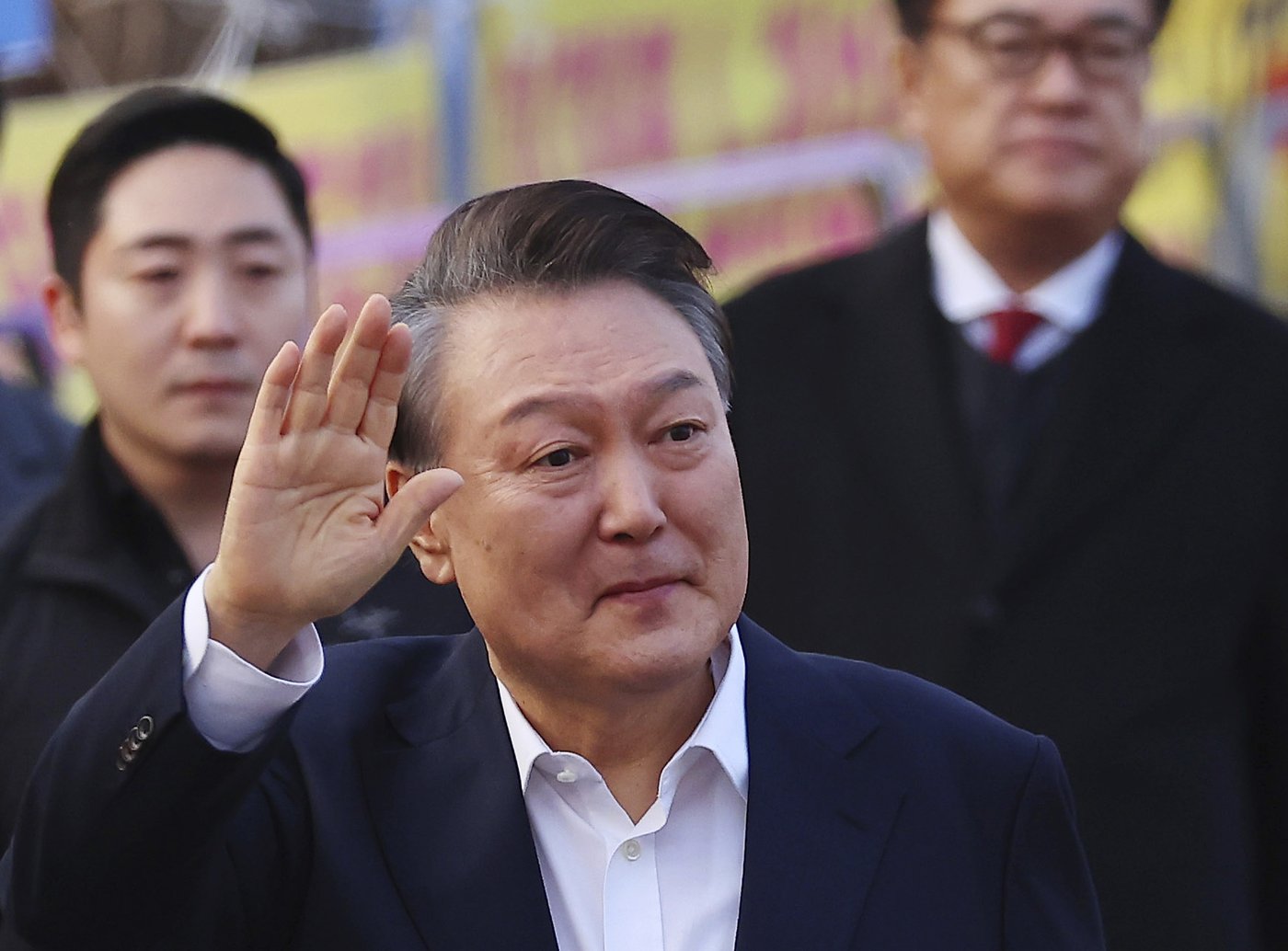Elevate your local knowledge
Sign up for the iNFOnews newsletter today!
Sign up for the iNFOnews newsletter today!
Selecting your primary region ensures you get the stories that matter to you first.

SEOUL, South Korea (AP) — After months of political turmoil, South Korean voters are choosing who will succeed former President Yoon Suk Yeol, who was removed from office over his ill-fated imposition of martial law in December.
Here is a timeline of events that led to Tuesday’s snap election:
Dec. 1
According to their criminal indictments, Yoon meets with his defense minister to discuss gridlock in the National Assembly as liberal opposition lawmakers use their majority to impeach senior officials and prosecutors and cut government budgets. Prosecutors say Yoon told the minister he wanted to take “emergency measures” against the opposition, something they allege he had been saying for months.
Dec. 3

In a televised announcement at 10:29 p.m., Yoon tells the nation he’s declaring martial law, portraying the National Assembly as a “den of criminals” paralyzing government affairs. As lawmakers begin rushing to the National Assembly, the military’s martial law command issues a proclamation declaring sweeping government powers, including the suspension of political parties’ activities and control over media. It says anyone who violates the decree can be arrested without a warrant. Hundreds of heavily armed troops encircle the legislature, apparently to prevent lawmakers from gathering to vote on the martial law declaration.
Dec. 4
At around 1 a.m., 190 lawmakers, including 18 from Yoon’s own conservative People Power Party, vote unanimously to lift martial law. Troops and police begin to retreat from the National Assembly shortly after. At 4:30 a.m., martial law is formally lifted following a Cabinet meeting.
Dec. 7
Yoon apologizes and says he won’t shirk legal or political responsibility for declaring martial law. He survives an impeachment vote boycotted by most ruling party lawmakers.

Dec. 12
Yoon defends his martial law decree as an act of governance and denies rebellion charges, vowing to “fight to the end” in the face of attempts to impeach him.
Dec. 14
The National Assembly impeaches Yoon on a 204-85 vote. His presidential powers and duties are suspended and Prime Minister Han Duck-soo, the country’s No. 2 official, takes over.
Dec. 31

The Seoul Western District Court issues a warrant to detain Yoon for questioning.
Jan. 15
Anti-corruption investigators and police raid the presidential compound and detain Yoon, who is the first sitting president to be detained.
Jan. 19
The Seoul Western District Court grants law enforcement authorities’ request for a formal arrest warrant for Yoon, citing concerns he could destroy evidence. His arrest triggers a riot by his supporters, who break into the court, smashing windows and equipment. Dozens are arrested.
Jan. 26
The Seoul Central District Prosecutors’ Office indicts Yoon on charges of masterminding an attempted rebellion, describing his power grab as an illegal bid to seize the legislature and election offices and arrest political opponents.
March 7
The Seoul Central District Court orders Yoon released from detention, citing unresolved issues about whether investigators had the proper authority to detain him. He is released the following day.
April 4
The Constitutional Court upholds Yoon’s impeachment and removes him as president, forcing a snap election within 60 days to choose his successor. The government the following week announces June 3 as election day.
April 8
The government announces the presidential election will be held on June 3.
April 27
The main liberal opposition Democratic Party nominates former party chief Lee Jae-myung as its presidential candidate. Opinion polls project him as the clear frontrunner in the weeks leading up to the election.
May 3
The conservative People Power Party nominates Yoon’s former labor minister, Kim Moon Soo, as its presidential candidate.
May 11
The People Power Party cancels then reinstates Kim’s presidential candidacy within hours, after a failed attempt to replace him with former Prime Minister Han, in a chaotic U-turn that underscores its disarray.
May 18
Lee, Kim, and two other minor candidates participate in the first presidential debate, which focuses on restoring political stability following the martial law saga and addressing trade challenges posed by the policies of U.S. President Donald Trump.
May 29
Two days of early voting are held in about 3,570 polling stations.
June 3
Polls open at 6 a.m. and are closing at 8 p.m. with the result expected to be known within hours.
Want to share your thoughts, add context, or connect with others in your community?
You must be logged in to post a comment.